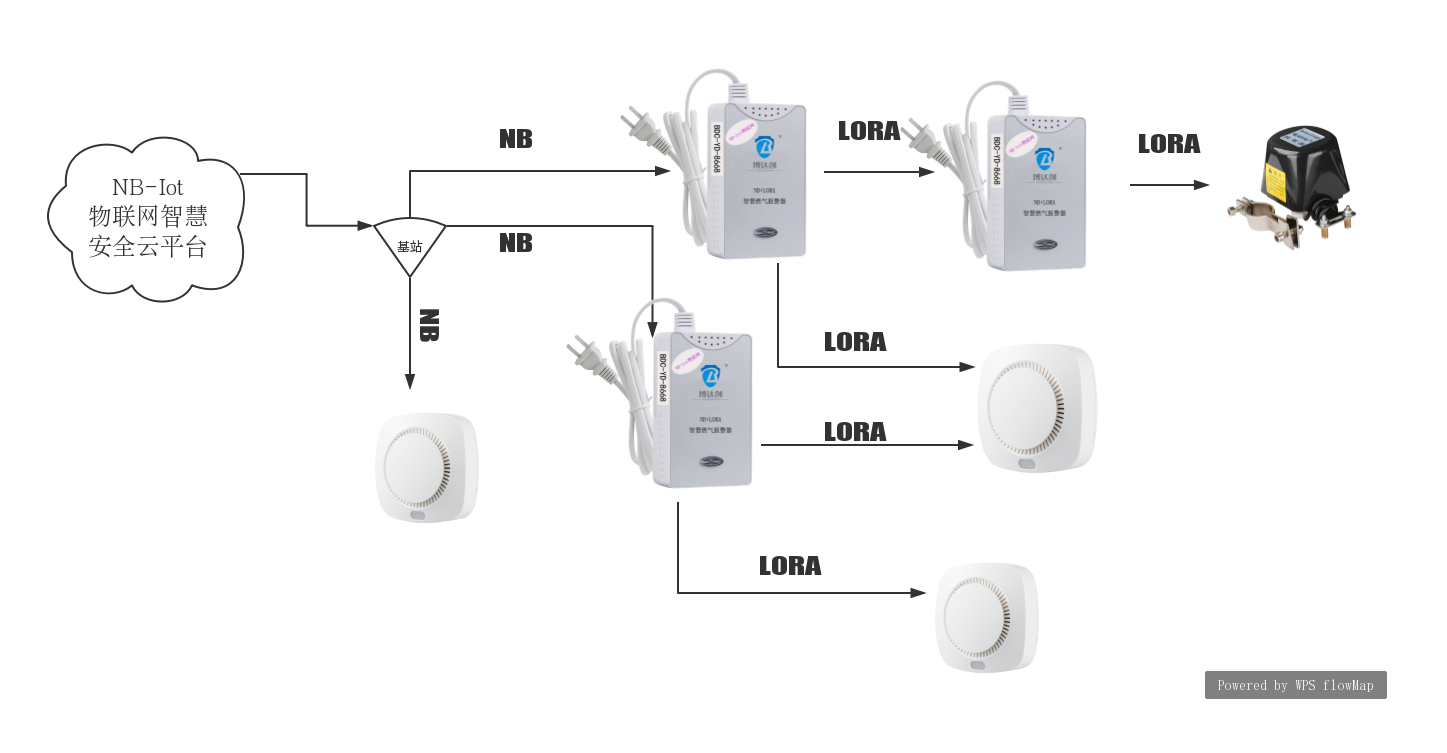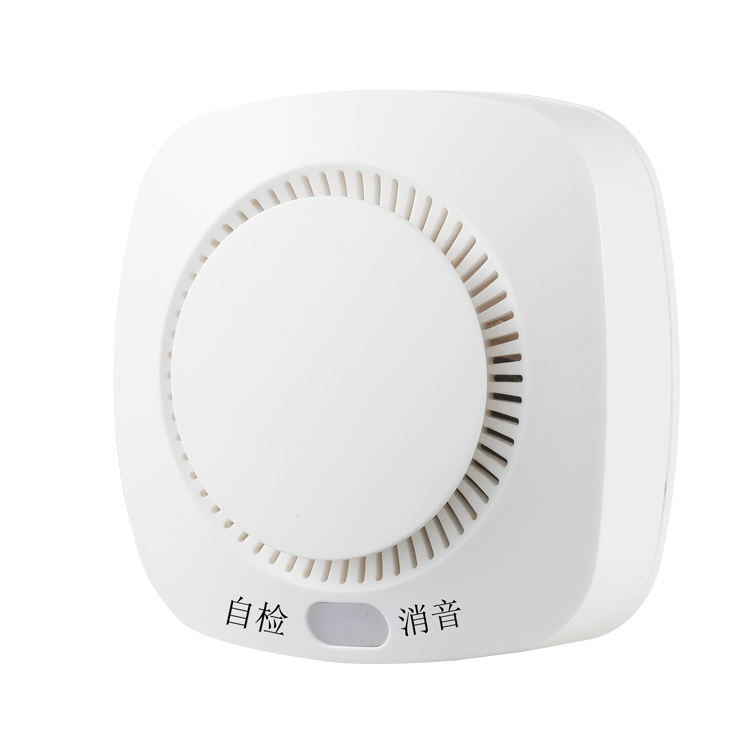Application of NB-Iot gas alarm and smoke in community fire protection construction
2020-02-13 19:05:17
Application of NB-Iot gas alarm and smoke in community fire protection construction
1. Foreword
According to the guidance of the document No. 2017297 of the Ministry of Public Affairs of the People's Republic of China on comprehensively promoting the construction of “smart firefightingâ€, it is clearly pointed out that at present, China's fire safety management work is very grim. According to the statistics of the public angang fire station, 2015, the whole country The fire was reported to be 338,000, resulting in 1,742 deaths, 1,112 injuries and direct property losses of 3.95 billion yuan. In the investigation of the cause of fire, most of the fire accidents were caused by residents who found that the fire was slow, inhaled toxic fumes and poisoned. However, most of the houses in China and all kinds of old buildings are not equipped with smoke alarms. Fire hazard. According to the requirements of the “Code for Fire Protection in Construction Designâ€, traditional fire automatic alarm systems must be installed in high-rise buildings of various scales, various large-scale casinos, hotels, factories and other places. It has been proved by practice that the automatic alarm system plays a huge role in reducing fire damage and reducing casualties. However, there are no widespread fire alarm facilities in all kinds of three-in-one places in the city, residences of widowed and lonely vulnerable groups, small hotels, restaurants, nursing homes, apartments, dormitories, and ordinary houses. In the event of a fire in the building, internal personnel can easily delay the escape time and miss the rescue time. Due to the characteristics of “scatter, far, small†in these places, there is an urgent need for a fire early warning system with simple and flexible installation, powerful function and low investment. It can realize the pre-alarm in the first stage of the fire, and notify the neighboring rooms. The personnel evacuated from the fire and sent fire information to the fire brigade in the area to greatly reduce the loss of property of the people and the fires of group deaths.
By analyzing the characteristics of fires in small and micro-locations and the fire department's demand for fire prevention work in small and micro-locations, the “small-micro-location intelligent cloud security platform†was launched. The system has the functions of early warning, simple alarm process, automatic handling of alarms, automatic notification of fire places and evacuation of surrounding personnel. Using innovative technology to reduce the number of dead fires and reduce fire damage is an indispensable part of smart fire protection and urban fire protection Internet of Things.
At present, the "Code for Fire Protection of Building Design" (GB50016-2014), "Code for Design of Automatic Fire Alarm System" (GB50116-2013), "Fire Safety Requirements for Residential and Production Storage and Operation Joint Use Sites" (GA703-2007) have been met. Requirements for the installation of smoke alarms in certain conditions of residential and "three-in-one" locations. All localities and relevant departments shall, in conjunction with the actual fire prevention and control, encourage and guide the expansion of the application scope of smoke detectors. In addition to the buildings that have been explicitly required to set up automatic fire alarm facilities, nursing homes, welfare homes, disabled service agencies, and support personnel for special hardships are provided. Institutions, kindergartens, and other elderly, disabled and children's buildings, home-based pensions, “empty-nest elderlyâ€, scattered elderly and special hardships, residential community, community-based service facilities and other community residents' activities, located in shantytowns, urban-rural integration, traditional culture Old residential buildings with fire-rated grades of villages and below, dormitory, rental houses, farmhouses, small hotels, underground living spaces, etc. should be promoted to install smoke alarms; encourage installation in other residential buildings. Smoke alarm.
2. Deployment plan

There are three deployment scenarios for community fire system alarms. First, only install NB smoke alarm, suitable for dormitory, small hotel and other places. The NB smoke alarm is directly connected to the communication base station, and the status signal and alarm signal are reported to the safety platform; the second is to install only the gas alarm and the cutting device, which is suitable for ordinary families. The alarm is connected to the communication base station through the NB, and the cut-off device is connected to the gas alarm through the Lora wireless protocol; the third is the mixed installation of the gas alarm and the Lora smoke alarm, which is suitable for homes and business service places with more rooms. The gas alarm is connected to the communication base station through the NB, and the smoke alarm and the robot connect the gas alarm through the Lora protocol. In this way, the alarm is used as the communication route, which effectively reduces the cost of the mobile communication.
3. Product Features

First, NB smoke alarm and Lora smoke alarm
1. Passed CCCF certification, which is a professional fire detection and alarm device with national fire compulsory product certification;
2, battery power, easy to install, no wiring required;
3, the unique smoke loss and the base demolition alarm function, the alarm and the smoke are dismantled and stolen in time;
4, the power consumption is extremely low, the smoke sense can work for 3 years, and the wireless base can work for 3-5 years;
5, using photoelectric smoke detection technology, stable performance, reliable work;
6. The NB-IoT version of the network uses base stations deployed by operators, featuring strong links, high coverage, low power consumption, and low cost. The Lora version uses the Lora protocol and uses the gas alarm as the LoraMesh route. It can realize self-organizing network, self-repair, and high communication reliability without additional communication costs.
Second, the fifth generation of gas alarms and cutting devices

The fifth-generation alarm is a high-reliability, long-life, intelligent security device with the following features:
Â
1. The alarm integrates artificial intelligence technology, which can intelligently detect gas leakage according to the user's usage habits and the mathematical model of gas diffusion. After using artificial intelligence technology, the false alarm rate and false negative rate of gas accidents are extremely low.
2. The alarm combines the NB and LoraMesh technology networking. It supports both the cellular data connection of the WAN and the AP, forming a LoraMesh grid for other Lora devices to access the Internet. The grid networking method greatly improves the reliability of the wireless connection.
3. The alarm is connected to the shut-off device (controller and robot) through the lora communication protocol. Once the leak is detected, the valve can be automatically shut off.
4. The valve controller has a position detection sensor, which can detect the torque, valve position and vibration parameters of the valve. According to these parameters, it can detect whether the valve is faulty, whether it can be properly opened and closed, and the valve can be automatically closed when an earthquake occurs.
5. The gas alarm is designed with low power consumption and is equipped with a replaceable battery module. It can be safely operated for 48 hours in the power off state. Ensure that the gas fortification is not lacking when the power is cut off.
6, replaceable sensor and battery design, easy to replace the accessories with expired life, thus ensuring the long life of the whole machine.

4. Platform features
1. IoT access, tens of millions of concurrent
The security platform can carry the IoT access of the massive gas customer premises equipment. The distributed cluster architecture can support million-level message routing and achieve millisecond message delay. The message server can be extended to support multiple authentication methods and efficiently store messages to the back-end database. The platform is fully Internet of Things supported by protocols such as MQTT, MQTT-SN, CoAP, WebSocket or proprietary protocols.
2, user unsafe behavior analysis
The platform integrates AI and big data technology, which can analyze the user behavior intelligence through data, analyze the inappropriate behavior habits of users in the process of using gas, and give corrective opinions. The improper habits that can be analyzed are:
1), the main valve is not closed every time the stove is used;
2), do not close the gas master valve before going to bed at night;
3), long time out does not close the main valve;
4), often use gas continuously for a long time (more than 2 hours);
5), the air is not kept clear during use;
6), no regular inspection of pipelines and burning appliances;
7), there is no regular test whether the alarm is available;
By occasionally sending prompt information to the user's mobile phone, the user's bad habits are gradually corrected, and the user's habitual changes are encouraged by means of points, rewards, and the like.
3, the use of scene security hidden danger analysis
Regularly remind users to upload photos of pipelines, burning appliances, valves, gas meters and alarms. The platform combines photos and previous uploaded photos with artificial intelligence technology to identify potential safety hazards and remind users. correct. Visible hidden:
1) Privately dismantled, privately modified, and privately moved gas equipment;
2) Temporary construction of private buildings on gas pipelines;
3) Pulling the rope and hanging objects on the gas pipeline;
4) There are inflammable and explosive materials in the kitchen;
5) Pipes and facilities are laid in walls or closed cabinets;
6) Rubber hose aging;
7) The position of the gas meter and the cooker is not fixed;
8) The cooker is not cleaned frequently, and the air holes are blocked by debris;
9) The water heater flue is off;
10) The burning appliance has exceeded the expiration date;
4, automatic inspection
The platform develops a patrol plan, and the controller performs a closing and opening operation on the valve periodically (for example, once every six months). According to the value returned by the manipulator's motion position sensor, it is judged whether the valve is faulty, and if there is a fault, the maintenance team is dispatched to the door for maintenance.
The traditional method can only take the method of manually sending people to the door for manual inspection, which is not only time-consuming and labor-intensive, but also inefficient.
5, multi-level alarm
In addition to sound and light alarms, the fifth-generation alarms can also automatically send notifications to owners, property, safety personnel, as well as gas companies, fire protection, safety supervision and other functional departments through the platform.
6, security monitoring
The platform can display the status and location of the device in real time and quickly locate the location where the alarm occurred. The number of new installations and the number of devices in each state are counted by time period and region.
5. Platform function
1, equipment management
Manage the supply unit, service type, category, product model, batch number and other information of the equipment.
2, statistical chart
According to the region, project, category, department, and model classification, the number of equipment, recharge amount, alarm number, and number of faults in each category are graphically calculated.
3, system management
Manage management, platform users, and key data dictionaries.
4, security monitoring
Monitor alarms, faults, new installations, etc. in two ways, maps and icons.
5. Project management
Each project is managed separately, and the management content includes tariffs, selling prices, communication protocols, customers, consumers, operation logs, and device status.
6, operation and maintenance management
Including recharge management, inspection management, alarm reporting unit management, maintenance unit management, user behavior analysis, installation quality monitoring, equipment automatic calibration, online upgrade.
WINNERLIFTING INDUSTRY & TRADING CO.,LTD. , https://www.winnerlifting.com